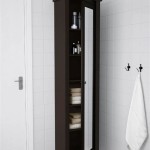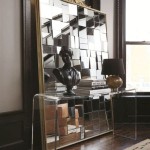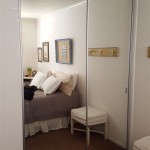Old Mirror Silvering: A Detailed Examination of Techniques and Processes
The process of silvering mirrors, particularly the traditional techniques used in creating antique or "old" mirrors, represents a fascinating intersection of chemistry, craftsmanship, and historical preservation. Understanding the nuances of old mirror silvering is essential for conservators, antique restorers, and anyone interested in the historical context of reflective surfaces. This article will delve into the methods employed in old mirror silvering, highlighting the materials, procedures, and considerations involved in creating mirrors that possess the unique aesthetic character of aged reflections.
Prior to the mid-19th century and the advent of modern chemical silvering processes, mirrors were predominantly created using a method involving a tin-mercury amalgam. This process, while effective in creating reflective surfaces, posed significant health risks due to the use of mercury. The development of chemical silvering, utilizing silver nitrate and reducing agents, offered a safer and more readily controllable method, which eventually replaced the traditional amalgam process. However, the distinct characteristics of the amalgam-based mirrors continue to be prized for their historical significance and unique visual properties.
The appearance of "old" mirror silvering is often characterized by imperfections, subtle variations in reflectivity, and a certain warmth in the reflected image. These qualities are largely a result of the materials used, the techniques employed, and the natural aging process that affects the silver layer over time. Modern attempts to replicate the appearance of old mirror silvering often involve techniques designed to introduce controlled imperfections and simulate the effects of age.
Understanding the Tin-Mercury Amalgam Process
The earliest techniques for mirror silvering relied on the use of a tin-mercury amalgam. This involved applying a thin layer of tinfoil to a clean glass surface and then covering it with liquid mercury. The mercury would dissolve a portion of the tin, creating a liquid amalgam. Excess mercury was then drained off, and the amalgam allowed to solidify, forming a reflective layer. A key aspect of this process was the quality of the glass; it needed to be perfectly flat and free of imperfections to ensure a uniform reflection. The tin foil used also had to be free of any impurities to get the best bond.
The creation of tin-mercury mirrors was a skilled craft, demanding precision and experience. The glass needed to be meticulously cleaned and prepared, and the application of the amalgam required careful control to ensure an even coating. The draining process had to be executed flawlessly to prevent streaking or unevenness in the reflective surface. Furthermore, the inherent dangers of working with mercury necessitated specialized ventilation and safety precautions.
Over time, tin-mercury amalgam mirrors exhibit a distinctive appearance. The mercury can react with the glass and the surrounding environment, leading to subtle discoloration and the formation of imperfections within the reflective layer. These imperfections, rather than detracting from the mirror's value, often serve to enhance its character and authenticity, providing evidence of its age and historical significance.
The Transition to Chemical Silvering: Silver Nitrate and Reducing Agents
The development of chemical silvering revolutionized mirror production. This process replaces the hazardous mercury amalgam with a solution containing silver nitrate, a reducing agent, and ammonia. The silver nitrate solution reacts with the reducing agent, depositing a thin layer of metallic silver onto the glass surface. Ammonia is used to help dissolve the silver nitrate and keep the solution stable. Common reducing agents include formaldehyde, Rochelle salt (potassium sodium tartrate), and glucose.
The chemical silvering process typically involves several stages. First, the glass is meticulously cleaned and sensitized, often with a stannous chloride solution, to promote adhesion of the silver. Next, the silver nitrate solution and the reducing agent are applied to the glass surface, either by pouring, spraying, or immersion. The solutions react, depositing a thin film of silver. The mirror is then rinsed, dried, and often backed with a protective coating of paint or varnish to prevent oxidation and damage to the silver layer.
This method offers greater control over the thickness and uniformity of the silver layer compared to the amalgam process. It also allows for the production of larger mirrors and more intricate designs. While still requiring careful handling and attention to detail, chemical silvering is significantly safer and more efficient than the traditional amalgam method. The resulting mirrors, however, possess a different aesthetic quality, often appearing brighter and more uniform than their amalgam counterparts.
Replicating the Appearance of Old Mirror Silvering: Techniques and Considerations
Achieving the appearance of old mirror silvering in new mirrors requires a deliberate approach to introduce imperfections and simulate the effects of aging. This can involve manipulating the chemical silvering process or applying post-treatment techniques to the finished mirror.
One technique involves intentionally introducing imperfections during the silvering process. This can be achieved by using slightly aged or contaminated silver nitrate solutions, varying the temperature or concentration of the reducing agent, or deliberately introducing dust or other particles onto the glass surface before or during silvering. These variations can create subtle irregularities in the silver layer, mimicking the imperfections found in antique mirrors.
Another approach involves applying post-treatment techniques to the silvered surface. This can include lightly etching the silver layer with mild acids or abrasives to create a cloudy or mottled appearance. Additionally, applying tinted varnishes or glazes can introduce a warm tone and further enhance the illusion of age. The protective backing can also be distressed or aged to contribute to the overall antique aesthetic.
The thickness of the silver layer is also a critical factor in replicating the appearance of old mirror silvering. Antique mirrors often have thinner silver layers than modern mirrors, resulting in a slightly less reflective surface and greater transparency. Replicating this effect requires careful control over the silvering process and potentially the use of specialized silvering solutions. It's important to note that authenticity is key- mimicking the damage rather than manufacturing will create a more believable and beautiful piece that is timeless.
The choice of glass can also play a significant role in achieving the desired effect. Antique mirrors often utilize hand-blown or slightly imperfect glass, which contributes to the unique character of the reflection. Using modern glass with a slightly wavy or textured surface can help to replicate this effect.
Ultimately, replicating the appearance of old mirror silvering is a complex and nuanced process that requires a deep understanding of the materials and techniques involved. The goal is to create a mirror that possesses the aesthetic charm of an antique while maintaining the functionality and durability of a modern product. This requires a careful balance between craftsmanship, artistry, and scientific understanding.

An Old Mirror That Was Altered Silvering Removed From The Back And Toile Wallpaper Placed Behind Mirrors Distressed

Wall Mirror 85 Cm Old Silver Oval Baroque Hanging Antique Bathroom Prunkspiegel

Is Your Looking Glass Showing Age Twin Cities Bungalow Club

How To Antique A Mirror Tutorial Jenna Sue Design

Simon S Vintage Mirror Home Gifts

How To Paint An Ornate Mirror Get Updated Look Diy Frame Old Mirrors

Silver Antique Mirrors

How To Antique A Mirror Easy No Scratching The Navage Patch

Highly Distressed Art Deco Mirror With Silvering Loss Nibbles

Colored Mirror Antique Decorative Silver Old Hotel China Made In Com








